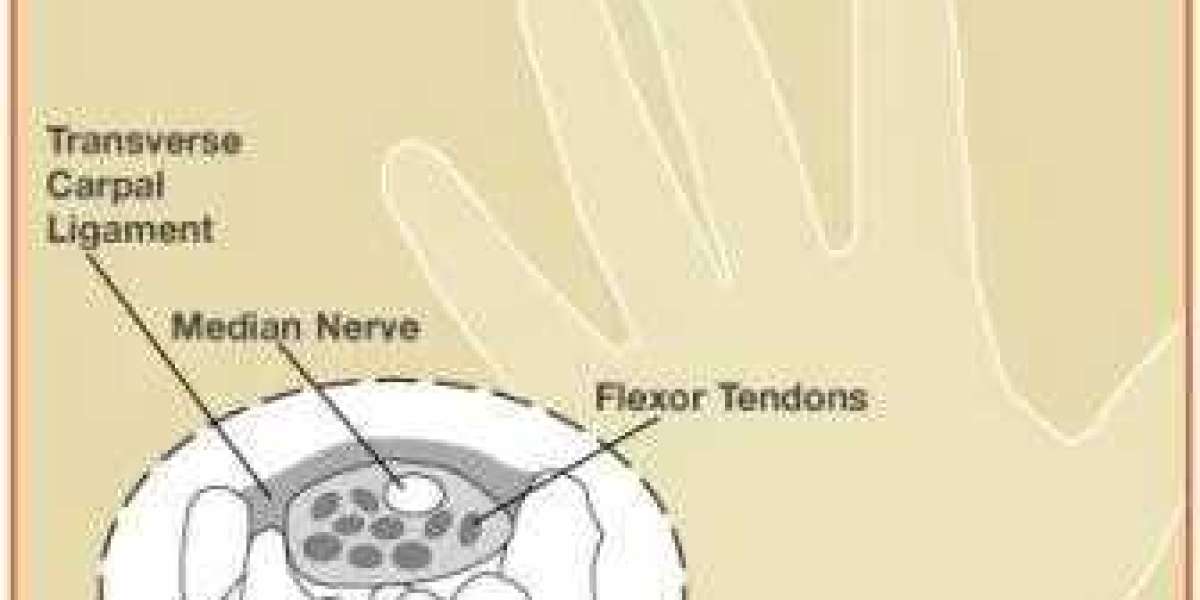Carpal tunnel syndrome (CTS) is a common condition that affects millions of people worldwide, particularly those who engage in repetitive hand movements, such as typing, assembly line work, or manual labor. The condition results in pain, numbness, and tingling in the hand and wrist, which can significantly affect a person’s daily activities and quality of life. Understanding what causes carpal tunnel syndrome, why surgery can relieve symptoms, and how recovery works is crucial for anyone suffering from this condition.

In this article, we will explore the root causes of carpal tunnel syndrome, explain how surgery can be a viable solution, and provide insights into the recovery process for patients in St. Louis.
What Causes Carpal Tunnel Syndrome?
Carpal tunnel syndrome occurs when the median nerve, which runs through a narrow passageway in the wrist called the carpal tunnel, becomes compressed or irritated. The median nerve controls sensation and movement in the thumb and first three fingers, so when it is compressed, it can cause a variety of symptoms in the hand and wrist. Several factors can contribute to the development of carpal tunnel syndrome:
1. Repetitive Hand Movements
One of the most common causes of carpal tunnel syndrome is repetitive hand movements that place strain on the wrist and fingers. Activities such as typing, writing, using hand tools, or operating machinery can lead to inflammation and swelling in the carpal tunnel, which in turn compresses the median nerve. People who work in jobs that require constant hand motion, such as office workers, factory workers, and musicians, are at higher risk for developing CTS.
2. Wrist Anatomy
Some individuals may be more prone to carpal tunnel syndrome due to the natural structure of their wrists. If the carpal tunnel is smaller or narrower than average, there is less space for the median nerve, making it more susceptible to compression. Additionally, anatomical abnormalities or injuries to the wrist, such as fractures or dislocations, can also increase the risk of developing CTS.
3. Medical Conditions
Certain medical conditions can increase the likelihood of carpal tunnel syndrome by causing inflammation or fluid retention in the wrist. Conditions such as rheumatoid arthritis, diabetes, and hypothyroidism are known to contribute to CTS. Pregnant women may also experience symptoms of carpal tunnel syndrome due to increased fluid retention during pregnancy, although these symptoms often resolve after childbirth.
4. Obesity
Obesity is another factor that can lead to carpal tunnel syndrome. Excess body weight can put additional pressure on the median nerve, particularly when combined with repetitive hand motions. Obese individuals are more likely to develop the condition and may experience more severe symptoms compared to those with a lower body mass index.
5. Genetics
Genetics can play a role in carpal tunnel syndrome, as some people are born with a predisposition to the condition. A family history of CTS increases the chances of developing it, particularly if other risk factors, such as repetitive motion or medical conditions, are present.
Why Surgery Can Relieve Symptoms
While conservative treatments like wrist splints, anti-inflammatory medications, and physical therapy can help manage mild cases of carpal tunnel syndrome, surgery is often the best solution for those with severe or persistent symptoms. Surgery can relieve pressure on the median nerve and provide lasting relief from pain, numbness, and tingling.
1. Carpal Tunnel Release Surgery
The most common surgical procedure for carpal tunnel syndrome is known as carpal tunnel release surgery. This procedure involves cutting the transverse carpal ligament, a band of tissue that forms the roof of the carpal tunnel. By cutting this ligament, the surgeon creates more space within the carpal tunnel, reducing pressure on the median nerve and allowing it to function properly.
There are two main types of carpal tunnel release surgery:
Open carpal tunnel release: In this traditional approach, the surgeon makes an incision in the palm of the hand and wrist to access the transverse carpal ligament. Once the ligament is cut, the incision is closed with stitches, and the hand is bandaged.
Endoscopic carpal tunnel release: In this minimally invasive approach, the surgeon makes one or two small incisions in the wrist or palm and inserts a thin tube with a camera (endoscope) to guide the procedure. The transverse carpal ligament is cut using specialized instruments, and the incisions are closed with minimal scarring.
2. Why Surgery is Effective
Surgery is effective for relieving carpal tunnel syndrome because it directly addresses the underlying cause of the condition: pressure on the median nerve. By cutting the transverse carpal ligament, the surgery permanently creates more space within the carpal tunnel, which reduces nerve compression and allows the median nerve to heal.
Most patients experience significant improvement in their symptoms after surgery, with many reporting immediate relief from pain and numbness. However, some patients may experience gradual improvement over time, particularly if the median nerve was severely compressed before surgery.
How Recovery Works in St. Louis
Recovery from Carpal Tunnel Surgery St. Louis is generally straightforward, but it can vary depending on the type of surgery performed, the severity of the condition, and the patient’s overall health. Patients in St. Louis have access to a variety of healthcare providers and rehabilitation services that can help ensure a smooth recovery process.
1. Post-Surgery Care
Immediately after carpal tunnel release surgery, patients can expect to wear a bandage or splint on their hand and wrist to protect the incision and keep the wrist in a neutral position. Swelling and discomfort are common in the days following surgery, but these symptoms can be managed with pain medication, ice therapy, and elevating the hand.
Patients are usually advised to avoid heavy lifting, gripping, or using their hand for strenuous activities for several weeks after surgery. Light movements, such as wiggling the fingers and gentle stretching, may be recommended to prevent stiffness and promote circulation.
2. Physical Therapy
Physical therapy plays a crucial role in the recovery process for carpal tunnel surgery. A physical therapist in St. Louis can guide patients through exercises designed to improve hand strength, flexibility, and range of motion. These exercises help prevent stiffness and scar tissue formation while promoting proper healing of the median nerve and surrounding tissues.
Therapy may also include nerve gliding exercises, which help the median nerve move smoothly within the carpal tunnel, reducing the risk of complications or recurrent symptoms.
3. Returning to Work and Daily Activities
The timeline for returning to work and daily activities after carpal tunnel surgery depends on the patient’s job requirements and the extent of their surgery. For patients who work in office settings or perform light manual tasks, a return to work may be possible within 1–2 weeks. However, for those with physically demanding jobs or tasks requiring heavy lifting or repetitive hand movements, recovery may take 6–12 weeks.
It’s essential to follow the surgeon’s recommendations and gradually increase hand activity to avoid overexertion during the healing process.
4. Long-Term Outcomes
Most patients experience excellent long-term outcomes after carpal tunnel surgery, with relief from pain, numbness, and tingling. However, it’s important to note that complete recovery may take several months, especially for patients with severe nerve compression. The median nerve may take time to heal fully, and patients may experience residual weakness or stiffness during this period.
Fortunately, the majority of patients in St. Louis can return to their regular activities and enjoy improved hand function and quality of life after carpal tunnel surgery.
Conclusion
Carpal tunnel syndrome is a condition that can significantly impact a person’s ability to perform daily activities, but surgery offers an effective solution for relieving symptoms and improving hand function. Whether caused by repetitive motion, wrist anatomy, or medical conditions, carpal tunnel syndrome can be addressed with carpal tunnel release surgery, which relieves pressure on the median nerve.
In St. Louis, patients have access to top-tier healthcare professionals who can guide them through the surgical and recovery process. With proper post-surgical care, physical therapy, and a gradual return to normal activities, most individuals can expect a full recovery and a return to their daily routines without the discomfort of carpal tunnel syndrome.








